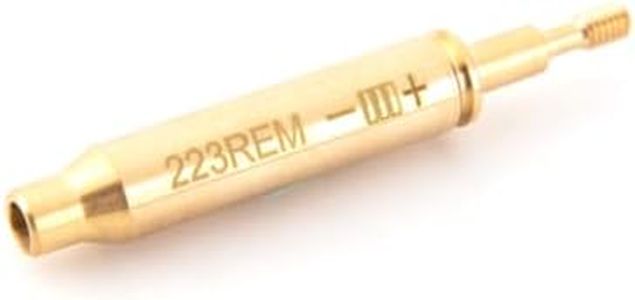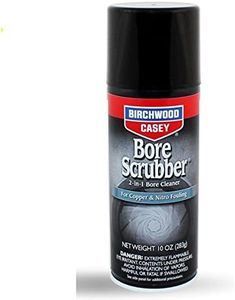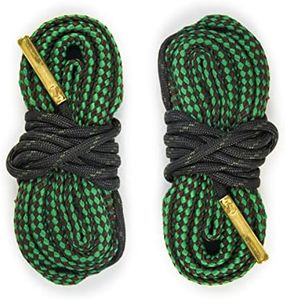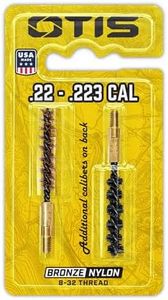We Use CookiesWe use cookies to enhance the security, performance,
functionality and for analytical and promotional activities. By continuing to browse this site you
are agreeing to our privacy policy
5 Best Bore Sighters
From leading brands and best sellers available on the web.Buying Guide for the Best Bore Sighters
Choosing the right bore-sighter is important for anyone who wants to sight in firearms more efficiently, whether for hunting, sports shooting, or general firearm maintenance. A bore-sighter helps you align your firearm’s sight with the barrel, allowing for more accurate shooting with fewer wasted rounds. The goal is to help you save time and ammunition by getting a close alignment before making final adjustments at the range. To choose the best bore-sighter for your needs, consider the main types and features that affect how easy, accurate, and versatile the tool will be for you.Type (Laser vs. Optical)The type of bore-sighter refers to how it projects the point of aim. Laser bore-sighters emit a laser beam from the barrel, showing you exactly where the barrel points, while optical bore-sighters use a lens and a grid to align your sights. Lasers are generally faster and easier for beginners, as you can see the dot on your target almost instantly, but their visibility can be affected by lighting and target distance. Optical models can be more precise and are not affected by lighting conditions, but they may take more time and practice to use. Pick a laser type if you want quick and visual reference, especially indoors or at short distances. Opt for optical if you prefer a classic method and want to use it in various lighting conditions.
Caliber CompatibilityThis spec tells you which calibers or gauges the bore-sighter will fit. Some bore-sighters are universal, working with many calibers by using adapters, while others are caliber-specific and only fit one size. Universal models give flexibility if you own different firearms, but they may be a bit less precise for each individual caliber. Caliber-specific ones can be more accurate for that particular firearm type but are limited in versatility. Choose universal compatibility if you have several firearms in different calibers; choose a dedicated one if you only need it for a single firearm.
Ease of UseEase of use refers to how simple and quick the bore-sighter is to set up and operate. This includes the method of insertion (chambered like a cartridge or inserted in the muzzle), button or switch placement, and instructions. Chamber-inserted models mimic a real cartridge for straightforward usage, while muzzle-inserted types require selecting and attaching the right adapter. For beginners or those wanting minimal fuss, go for a model that offers easy, tool-free setup and clear guides.
Visibility and RangeVisibility is about how well you can see the bore-sighter’s reference point (laser dot or optical grid), especially under different lighting conditions and distances. Red lasers are standard but can be harder to see in bright light, while green lasers are more visible in daylight but usually cost more. Optical grids are unaffected by light but may require closer inspection. If you’ll be sighting in outdoors, especially at longer distances or in bright daylight, higher visibility (like green lasers) or optical systems work best. For indoor or low-light use, standard options should suffice.
Durability and Build QualityThis spec covers how sturdy the bore-sighter is and what materials it’s made from. Metal bodies provide better durability, especially if the tool will be used often or in rugged conditions. Plastic versions may be lighter and more affordable but might not last as long with heavy use. If you expect frequent use, travel, or exposure to the elements, prioritize metal construction and robust design.





